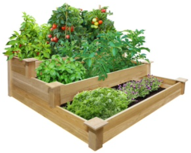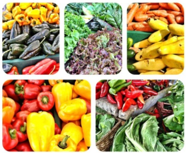By Jennifer Ailor, Climate Committee Chair
Here are a dozen actions you can take to mitigate or adapt to a warming climate. You won’t save the Earth alone, but if we all do something, it will make a difference. All life is at risk if we don’t.
Plant trees – Trees are carbon sinks, and the more there are the better off the Earth. Whenever and wherever and however you can, plant trees, and never stop (native species are the best option). If your property is large enough, plant trees there. If you have family or relatives without many trees, see if they would allow you to donate and plant some. Check with your children or grandchildren’s schools and see if they would accept trees. Do the same with local parks. Finally, donate to organizations that will plant trees for you, often in honor of someone you care about. Here are links to some of the many organizations that will plant trees for you:
https://shop.arborday.org/content.aspx?page=commemorative
https://treesforlife.org/give/landing-pages/donating-trees
https://www.alivingtribute.org/
Drive less – Where feasible, commit to driving fewer days a week anywhere. Bundle errands and appointments to reduce driving. Work from home. Recreate locally. Commit to your next vehicle purchase to be a more efficient, high mileage vehicle or better yet a hybrid or electric. Carpool to work, meetings and group events. Use public transportation if available.
Cut your lawn less often & don’t fertilize – Extension Services recommend letting your grass grow to 3 inches or more before cutting. Don’t fertilize! Instead, let grass clippings and leaves (shredded) remain on the lawn to feed itself. They are equal to or better than artificial fertilizers. Also, remember lawn mowers spew pollutants, just like cars and trucks.

Become more energy efficient – Many utilities consider energy efficiency a form of renewable energy because less demand may mean fewer new and very expensive power plants. Such utilities offer lots of tips for reducing electricity use and may offer refunds for buying ENERGY STAR appliances and electronics, installing solar panels and putting in ground source or air heat pumps.
The federal government and some state governments also offer tax credits for such purchase, as well as for solar panels and other renewable energy installs. For example, you can now buy heat pump water heaters that qualify for both credits and rebates. The U.S. Department of Energy and Energy Star websites offer many tips on energy-efficient new construction and remodels. Start with low-hanging fruit in improving home efficiency, such as adding insulation.

Plant drought- and heat-tolerant plants – If you’re a plant lover, select plants that will survive and even thrive in hot, dry conditions. Sun-loving native plants, particularly those for prairies, and shade-loving natives found in dry woodlands, are your best choice. Local nurseries will have non-native cultivars that may tolerate a warming climate.

Give up the synthetic herbicides, pesticides and fertilizers – Our plants and critters will have an increasingly difficult time surviving in a warming climate. Give them a break by avoiding herbicides that destroy indiscriminately. Target nuisance plants by relentlessly mowing or clipping them to prevent seed formation. Keep in mind that organic options can be as harmful to beneficial insects as synthetic ones. Use compost, shredded leaves and cover crops that die over the winter to feed your plants.

Practice no-till gardening – Every time you break up soil, you are potentially destroying the microorganisms, earthworms and other critters than make up and inhabit the precious soil we depend on. You’re also drying out the soil faster. Instead, practice no-till gardening where practical. Dig holes instead of tilling rows. Use raised beds, containers and greenhouses. Use compost to top-dress plants and cover bare soil.

Conserve water – In a warming world, there will be more extremes of droughts and floods. For the dry times, practice water conservation: use drip irrigation, water early in the morning and use gray water for irrigation and container watering.
Use rinse water from the kitchen sink to water house and outdoor plants. Put a 5-gallon bucket in your shower and catch that water for your plants.
Take 2-minute showers instead of 5-minutes or longer ones.
Plant a rain garden – Rain gardens are another way to conserve water in a landscape by using plants to slow down and soak up excess water and reduce erosion.

Eat and buy local – Grow your own or buy locally grown vegetables and fruit from cooperatives, farmers’ markets, roadside stands, orchards and other local sources.
You will end up with fresher produce grown organically and with less water and fewer pesticide and herbicide residues. Buying local also means lower fuel costs in transporting produce.
Think before you shop – With wish-list items only a click away from online purchase, it’s easy to buy what you may not need. The planet does not have the resources to support its billions of people in Western lifestyles. Instead of buying new, shop for next-to-new items or for higher quality items that have longer lives. Look for items with minimal packaging, especially at the grocery store. When shopping in-person, decline plastic bags and provide your own re-usable ones. Shop for sustainably produced and packaged items
Avoid plastic – For some of us, plastic is the line in the sand we refuse to cross. There’s just no reason to accept plastic shopping bags at stores. Bring your own bags from a stock you keep in your vehicle. Buy grocery items packaged in glass, metal, cardboard, paper or cellulose instead of plastic. Buy cellulose-made substitutes for plastic freezer and sandwich bags.
